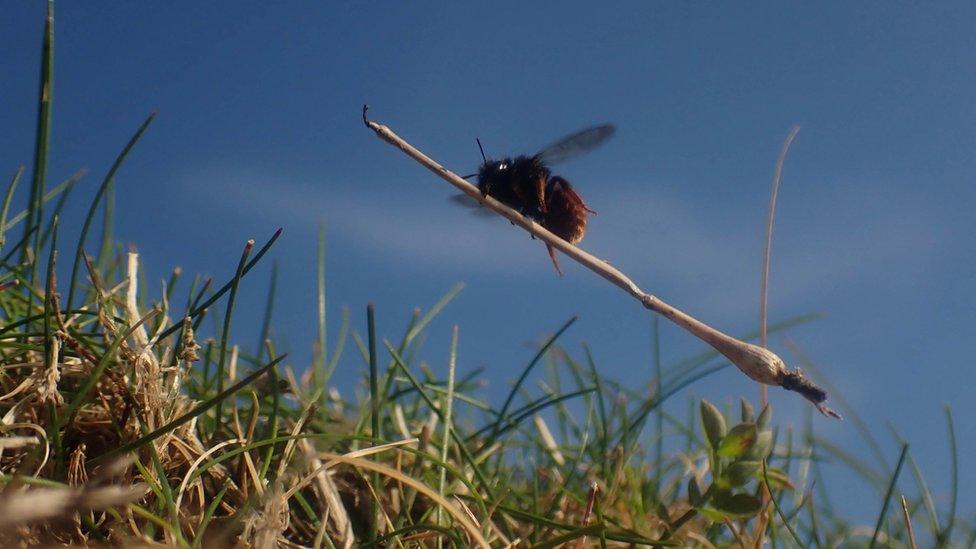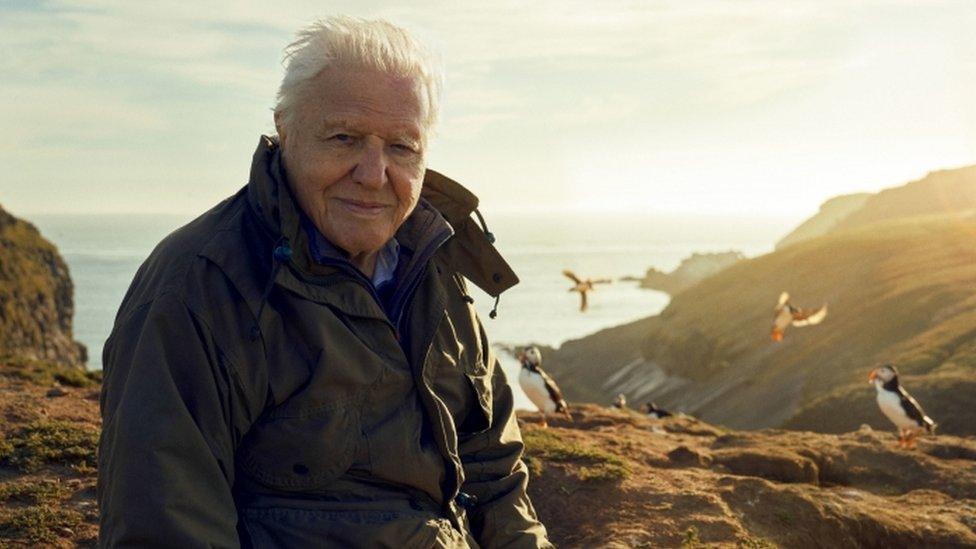Wild Isles: Meet the mason bee that flies a broomstick!
- Published
- comments

Wow, cool broomstick. Is it a Nim-BUZZ 2000?
Check out this incredible picture of a bee flying a broomstick!
This female two-coloured mason bee may look like she's trying out for the Quidditch team (she'd make a great BEE-ter), but she is actually busy collecting grass stalks to build her nest.
The tiny insect was filmed by the crew behind Sir David Attenborough's Wild Isles series and was observed collecting up to 100 sticks of grass as well as disused snail shells.
They noted that the way she was carrying the grass made it look like she was riding a tiny broom.
Producer Nicolas Gates said she is now affectionately known as "witch bee".
Nina chats to one of the Wild Isles producers Nick Gates
"The two-coloured mason bee whizzes around chalk grasslands looking for empty snail shells of the exact right size," said producer Nick.
"Like Goldilocks with her porridge testing, the bee will check lots of empty shells in the grassland, some are too big, some are too small or damaged, until she finds just the right one within which to lay her egg.
"She then nests in the snail shells and hides it from predators using the dry grass stalks she collects."
You can see the full story of the bee and many other amazing creatures that inhabit the UK's grasslands in the latest episode of Wild Isles, which is on BBC iPlayer now.

Sir David Attenborough's new series focuses on nature found across the British Isles
The latest episode also features the never before seen lifecycle of a blue butterfly.
The sequence, which was filmed over three years shows how a killer caterpillar transforms into a stunning large blue butterfly.
The species was once extinct in the UK, but was reintroduced to the British Isles and is now believed to be one of the largest concentrations of large blue butterflies anywhere in the world.
Wild Isles cameraman Alastair MacEwen said: "The making of Wild Isles has coincided with remarkable conservation success. Through careful scientific management, the butterfly has been brought back and can be seen once more in British meadows, giving us a glimmer of hope for the future."
- Published25 March 2023
- Published7 March 2023

